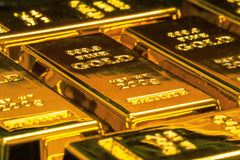The Rich History of Gold and Silver
Gold and silver have captivated human beings for millennia, serving as symbols of wealth, power, and beauty. Their allure is deeply rooted in history, influencing economies, cultures, and societies worldwide.
As potential investors consider these precious metals, understanding their historical significance can offer valuable insights into their enduring value.
Ancient Origins
Discovery of Gold and Silver
The history of gold and silver dates back thousands of years, with their discovery believed to have occurred during the early periods of human civilisation.
Archaeological evidence suggests that gold was first found in its natural state around 6000 BCE in regions like the Middle East. On the other hand, silver was discovered slightly later, around 4000 BCE, often in conjunction with gold.
Early Uses
In their earliest forms, gold and silver were used primarily for decorative purposes. The malleability of gold made it ideal for crafting jewellery, religious artefacts, and symbols of power. Silver was also used in similar ways but gradually gained prominence for its practicality in trade.
The transition from mere decoration to currency marked a significant turning point in the history of these metals.
Gold and Silver in Ancient Civilisations
Egyptian and Mesopotamian Empires
In ancient Egypt, gold held a sacred status. Pharaohs adorned themselves with gold jewellery, believing it to be the flesh of the gods. The wealth of the Egyptian Empire was often measured by its gold reserves, with the metal playing a crucial role in both religion and governance.
In Mesopotamia, silver was more commonly used as a form of currency. The shekel, a unit of weight used to measure silver, became one of the earliest standards for trade.
Greek and Roman Empires
The Greeks and Romans advanced the use of gold and silver significantly. The history of gold in these empires coincides with the rise of coinage. Gold coins and silver coins quickly became the standard for trade and wealth accumulation.
The Romans established a sophisticated monetary system where gold and silver coins were minted, influencing the economic structure of the empire. These coins facilitated trade across vast distances, solidifying the role of gold and silver as currency.
Asian Empires: China and India
In Asia, gold and silver were equally revered. In China, silver became the backbone of the economy during the Tang and Song dynasties, particularly through the use of gold ingots and silver ingots as currency.
India, on the other hand, held gold in high esteem. The Indian subcontinent, rich in gold resources, saw extensive use of gold in religious ceremonies, as well as in trade.
The Role of Gold and Silver in Medieval Europe
Feudal Society and Use of Precious Metals
During medieval times, gold and silver continued to play significant roles in Europe. The exchange of land, services, and goods often involved gold and silver. The scarcity of gold, however, made silver the more common medium of exchange among the general populace.
Goldsmiths and Currency Standardisation
As trade expanded across Europe, the need for standardised currency grew. Goldsmiths, who originally worked primarily with jewellery, began to play a crucial role in the economy. They became early bankers, holding gold and silver deposits and issuing receipts that later evolved into the concept of paper money This period marked the beginning of the formalisation of currency systems, with gold and silver at the heart of economic activity.
The Global Impact of the Gold Rushes
California Gold Rush
The discovery of gold in California in 1848 triggered one of the largest mass migrations in history. The California Gold Rush not only transformed the American economy but also had global ramifications.
Thousands of people flocked to the region in search of fortune, and the influx of gold into the market significantly increased global gold supplies, impacting economies around the world.
Australian Gold Rush
Similarly, the Australian Gold Rush of the 1850s played a pivotal role in shaping the country's history.
Gold discoveries in Victoria and New South Wales attracted immigrants from around the globe, boosting the Australian economy and leading to rapid development.
Gold and Silver in Modern Times
Gold Standard and Fiat Currency
The 19th and early 20th centuries saw the rise of the gold standard, where currencies were directly linked to a country's gold reserves. This system provided stability but was eventually abandoned in favour of fiat currency.
The shift to fiat currency didn’t diminish the value of gold and silver; instead, these metals continue to serve as safe-haven assets, particularly during economic uncertainties.
Modern Uses and Applications
Today, gold and silver aren’t just investment vehicles or symbols of wealth–-they’re also integral to modern technology and industry.
Gold's conductivity makes it essential in electronics, while silver's antibacterial properties find applications in medicine.
Future Predictions
As we look to the future, the demand for gold and silver is likely to remain strong. Economic uncertainties, geopolitical tensions, and technological advancements will continue to drive the value of these metals.
Conclusion
The history of gold and silver is a testament to their enduring value and significance. For potential investors, the timeless allure of gold and silver, coupled with their practical applications, makes them compelling assets to consider in any investment portfolio.


